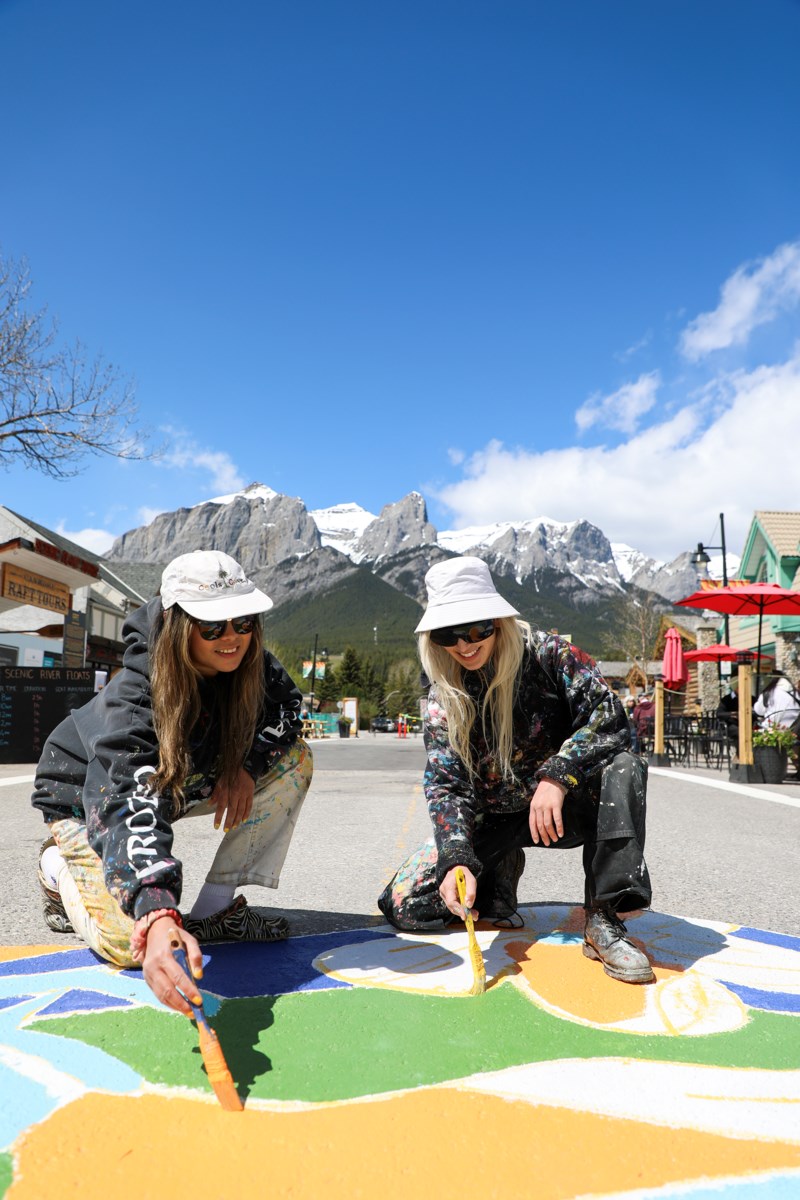
CANMORE – An overwhelming theme from the public hearing on Canmore’s downtown area redevelopment plan (ARP) was the importance of arts and culture in the mountain community.
A steady stream of speakers and letter writers highlighted the key role arts and culture have in not only defining Canmore’s downtown, but the community as a whole.
From numerous galleries, artsPlace, Canmore Folk Festival, murals and regular events throughout the year, the artistic and creative side of residents and visitors has etched itself into the mountain town.
“At artsPlace, we see every day how creative experiences build connection, belonging and pride of place,” said artsPlace executive director Jeremy Elbourne at the May 6 public hearing.
He noted Canmore is facing many issues ranging from housing, transit, climate and infrastructure, but added the downtown plan includes arts and culture as part of helping community rather than an afterthought.
“It positions them as part of the solution…. A way to create a downtown that feels complete, a place that supports the whole person and the whole community,” he said.
Roger Jackson, a 40-year resident of Canmore, said he was “extremely pleased” to see the extent to which arts and culture were identified in the plan.
He said it can provide a social connection, inclusion, engagement, allow for creative outlets and be positive for both mental health and well-being.
“Arts and cultural activities help define a community’s unique character,” he said. “Whether it’s murals, local music, traditional crafts, theatre, these creative expressions reflect local stories, values and histories, and citizens supporting them foster a sense of pride and belonging in the community.”
‘Sense of community’
Many speakers became emotional at times, discussing past instances where the arts supported them at difficult times in their lives.
Whether it was giving a sense of belonging or allowing for a positive space, several speakers highlighted how a space like artsPlace has helped then fit into the community.
“It’s always been a place where I’ve felt I can show up as my whole self and that’s pretty unique,” said Canmore Pride Society board chair Mich Lam.
Lam said it has been a safe space for the 2SLGBQ+ community in connecting with other people and feeling comfortable.
“It’s where we can gather. It’s where we can meet others in community and it’s where we have that sense of safety and belonging,” Lam said.
“That’s the beauty with the arts. It allows us to feel that sense of community regardless of our identity. It puts people from different backgrounds into a room together to connect, whether it’s a pottery class, a film screening or a panel discussion.”
In a letter to council, artsPlace board member Heather Walter said she sees “every day what a difference the arts makes to our community and how artsPlace in many ways represents the heart of our community.”
She noted arts and culture can offer people a place to “come together, reflect, celebrate and belong” and support mental health, identity and cultural connection.
ArtsPlace treasurer and board member Bruce Byford echoed Walter’s comments, highlighting that “communities that invest in arts and culture see significant returns – not only in economic development, but in community well-being, identity and resilience.”
Gail Culbertson, a former Ontario resident who worked at the McMichael Canadian Art Collection near Vaughan, emphasized the “magic of art and how inspiring it is for children to be creative.”
“Canmore has such a vibrant arts and culture scene,” Culbertson wrote. “It really suits the vibe of this mountain town and is a reflection of the natural splendour that surrounds us. I truly believe that creativity and community go hand in hand.”
The plan: arts, culture, heritage
The draft ARP identifies arts as a key component for both the commercial core and the civic corridor.
A specific section of the plan focuses on arts, culture and heritage, highlighting the “importance of providing arts and cultural spaces, preserving or integrating historical resources and incorporating Indigenous perspectives.”
The plan notes Canmore was founded as a railway hub and became a key centre for coalmining, but in recent decades it has become a “vibrant hub of adventurers, creators and innovators.”
Among the goals are having land uses to support arts and culture, conserving and enhancing historic resources and finding new options for public art and placemaking.
The civic corridor – which could be a central plaza at the intersection of 7 Avenue and 9 Street – is proposed as a place for “civic, arts, cultural, recreational or other community-orientated functions.”
Debra Cummings stated in a letter that a larger space for arts and culture would “foster community engagement and appreciation of the arts in its many divergent forms.”
She noted as a person who moved to Canmore from Calgary during the COVID-19 pandemic, arts in the community provided a valuable outlet.
“For me, the pandemic was a clarifying reminder that fulfillment comes in part from participating in something larger than yourself, which is why I immediately became a member of artsPlace,” Cummings wrote. “From signing up for many courses to its movies and concert series, to helping fundraise, it has become my second home.”
Elbourne, who has been the long-time top administrator at artsPlace, said he felt the plan took a holistic approach in addressing various issues in building a long-term vision of the downtown.
“It reflects an understanding that a truly livable, sustainable community isn’t just one that meets basic needs,” he said. “It’s one that nurtures the human spirit.”
